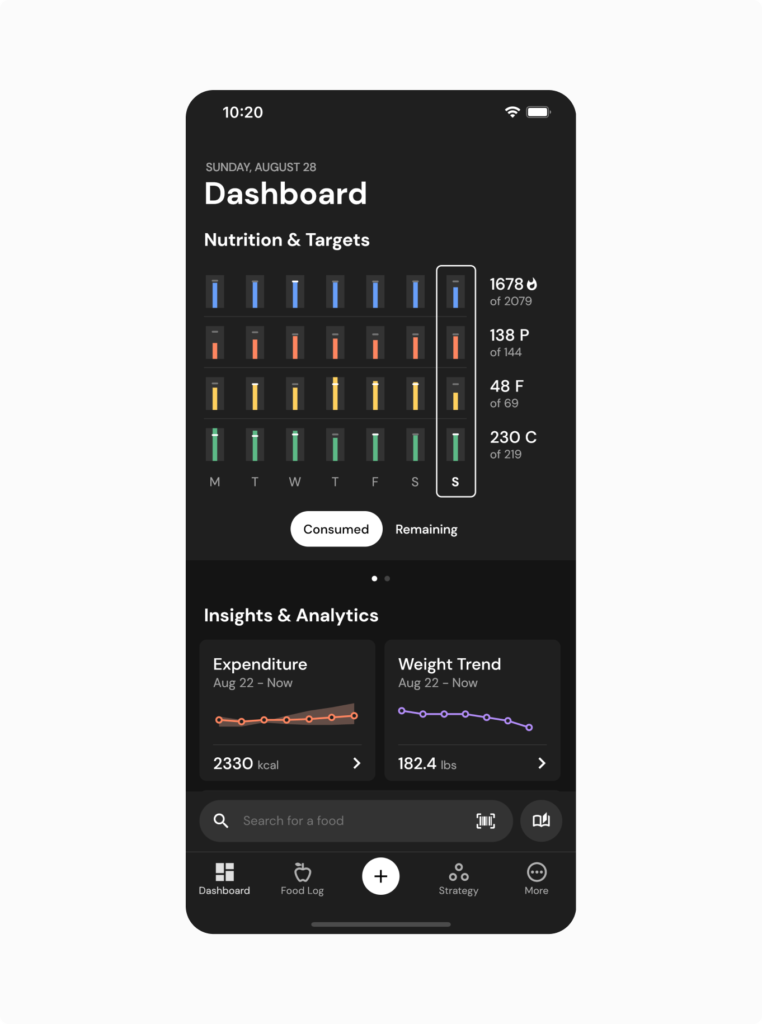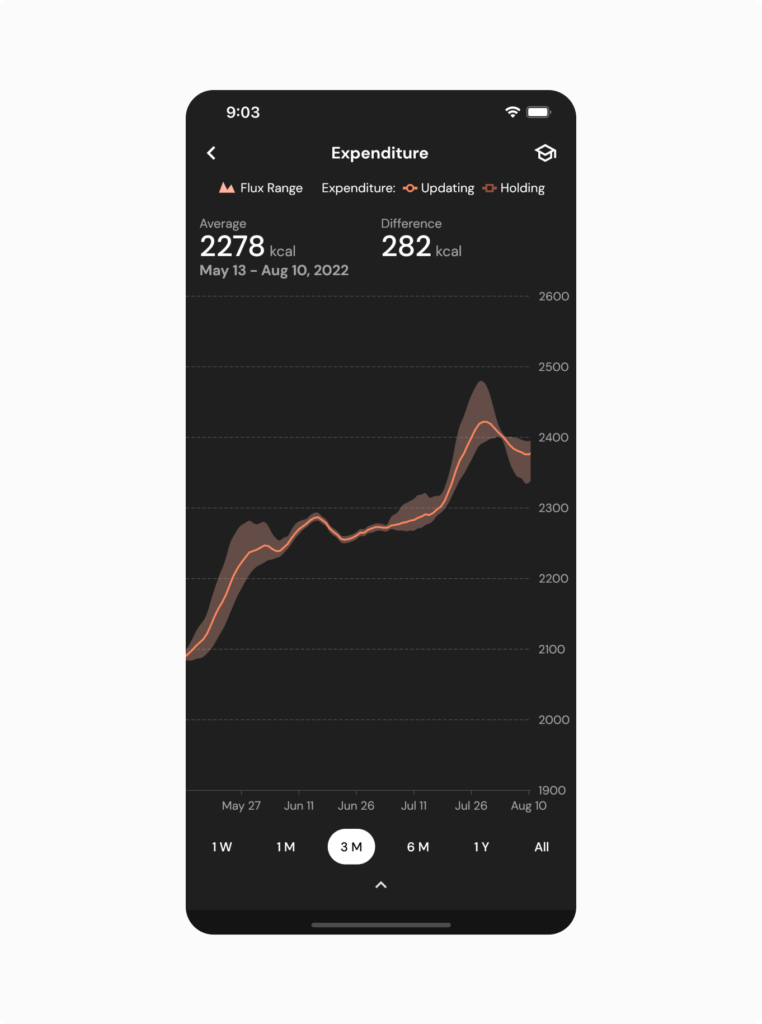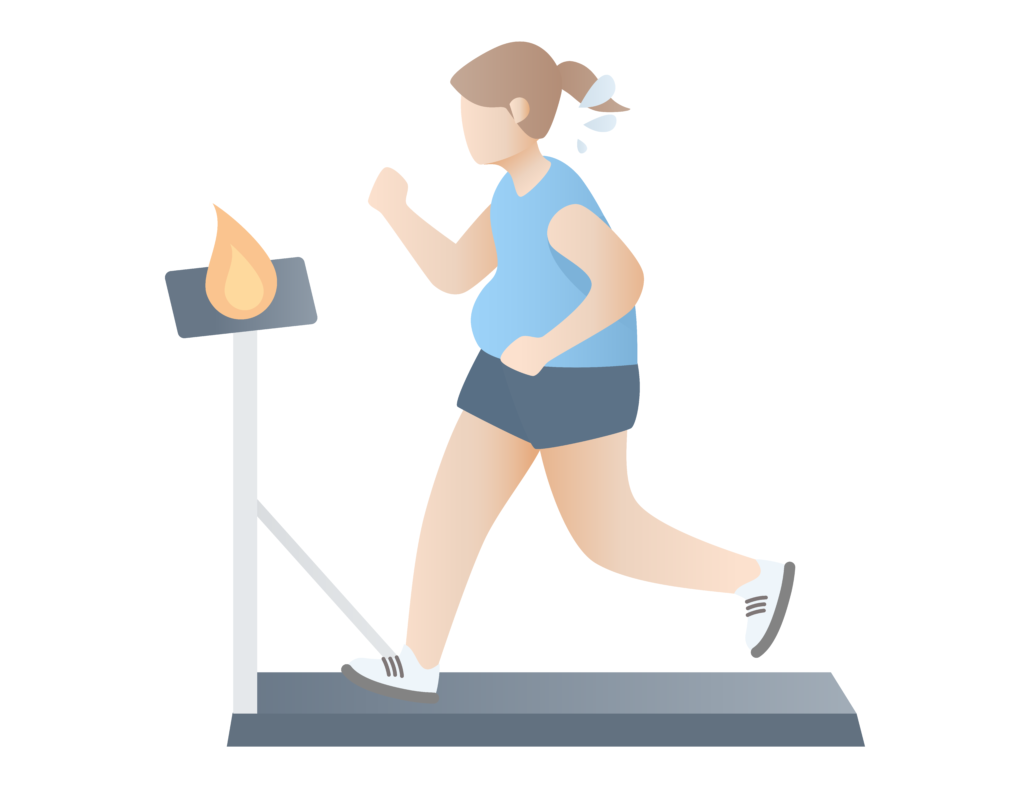How many calories do you burn during exercise?
Have you ever wondered about the number of calories burned lifting weights? Or your calories burned walking? Energy expenditure increases during exercise, but it can be hard to know exactly how much, and how this will impact other components of energy expenditure. Fortunately, our exercise calorie calculator makes it easy to estimate how many calories you burned during exercises such as walking, running, lifting weights, and more, and how this will impact your total energy expenditure for the entire day.
After using the calculator, be sure to check out a free trial of our nutrition app MacroFactor. By entering your weight and the foods you eat each day, MacroFactor calculates your total calories burned per day and makes smart calorie and macro adjustments to your plan to keep you on track with your weight goals. It’s the smartest, fastest nutrition and diet coaching app on the market.
About our exercise calorie calculator
Whether you’re trying to fuel up for an arduous exercise bout, replace the calories burned during a one-off physical activity, or incorporate exercise into a weight loss program, knowing the number of calories burned during exercise can be valuable information. Unfortunately, wearable technologies don’t get the job done with adequate accuracy, so we’re left to search for estimates.
It’s hard to find accurate estimates for exercise energy expenditure for three main reasons.
- Exercise can be completed with a virtually limitless number of modality, duration, and intensity combinations. Estimates aren’t very helpful unless they are specifically tailored to the exact details of an exercise bout.
- People “compensate” for exercise energy expenditure by reducing other components of energy expenditure. This means that 200 calories of exercise energy expenditure will typically increase total daily energy expenditure by fewer than 200 calories. To make things even more complicated, different people tend to have different magnitudes of compensation.
- An exercise energy expenditure estimate isn’t useful unless it’s framed relative to your resting energy expenditure. If you weren’t exercising, you’d be resting, which still involves a rate of energy expenditure that is far greater than zero. So, we need to calculate added energy expenditure – the increase in energy expenditure beyond the resting value. However, resting energy expenditure also varies from person to person.
Obtaining an accurate estimate of added energy expenditure from exercise would normally require a lot of work. Fortunately, we did all the hard work so you don’t have to. Just enter some basic information in our exercise calorie calculator, and you’ll be good to go.
When you’re done, the exercise calorie calculator will provide our best evidence-based estimate of the extra calories burned by your exercise bout, after accounting for individualized estimates of exercise energy compensation and resting metabolic rate.
No exercise calorie calculator could possibly predict an exact value with 100% accuracy. Our exercise calorie calculator provides our very best estimate based on the individualized information you enter, but it’s still an estimate. As a result, the exercise calorie calculator will also give you a range of probable values – even if our calculated estimate isn’t 100% perfect, the “true value” is very likely to fall within this range.
Calories burned lifting weights
How many calories does weight lifting burn?
A study by João and colleagues gives us a decent heuristic for estimating calories burned lifting weights: total energy expenditure during resistance training is probably about 6 calories per minute (including rest intervals).

Of course, burning more energy during a training session may not scale perfectly with increases in total energy expenditure throughout the day.
To get the most accurate estimate of calories burned lifting weights for your body, make sure to use our free exercise calorie calculator tool above. The calories burned lifting weights calculator takes into account the exercise duration, your body size and body-fat percentage, how often you exercise, and more.
Calories burned walking
How many calories does walking burn?
A good heuristic for calories burned walking is 1 calorie per kilogram per kilometer. For example, a person who weighs 70kg would burn about 70 calories per kilometer walked.
Of course, burning more energy during walking may not scale perfectly with increases in total energy expenditure throughout the day.
To get the most accurate estimate of calories burned walking for your body, make sure to use our free exercise calorie calculator tool above. The calories burned walking calculator takes into account the exercise duration, your body size and body-fat percentage, how often you exercise, and more.
A caveat about using exercise calorie calculators
Increasing the number of calories burned via exercise may not increase your total daily energy expenditure in a predictable fashion. Everyone’s bodies are different, and your body may compensate for the calories burned during exercise in a unique way. (We talked about this extensively in our article “The Drawbacks of Using Wearable Devices to Inform Nutrition Targets.”)
In addition to issues associated with energy compensation, “eating back” calories expended via exercise may also lead some people to develop an undesirable relationship with exercise. This calculator is intended to help you properly fuel exercise bouts or incorporate exercise into a well-designed weight loss program – it should not be used for the purpose of “earning” calories through exercise.
We’ve designed the exercise calorie calculator on this page to be as accurate as possible for a one-time estimate. However, we recommend our app MacroFactor to anyone looking for personalized energy expenditure analytics and dietary recommendations.
A better solution for tracking calories burned during exercise
Our nutrition and diet coach app MacroFactor can calculate the impact of exercise on total energy expenditure, and make appropriate dietary adjustments based on your goals. In addition to being the fastest food logger on the market and using smart algorithms that keep you on track with your weight goals, MacroFactor also helps you monitor your energy expenditure and learn how many calories you’re burning.


Here’s how it works:
- When you first log into the app, you’ll answer a few questions about your goals and lifestyle.
- MacroFactor will design a customized calorie and macro plan for you based on the latest science and your preferences.
- You log your weight and the foods you eat daily.
- MacroFactor calculates your energy expenditure and caloric needs.
- MacroFactor makes adjustments to your calorie and macro recommendations each week based on how your body is responding.
- You reach your goal in an evidence-based, sustainable way.
Get your smart energy expenditure estimate, food logging access, and your custom macronutrient plan now by starting a free trial of MacroFactor.
Key References
Ainsworth BE, Haskell WL, Herrmann SD, Meckes N, Bassett DR, Tudor-Locke C, et al. 2011 Compendium Of Physical Activities: A Second Update Of Codes And Met Values. Med Sci Sports Exerc. 2011 Aug;43(8):1575–81.
Careau V, Halsey LG, Pontzer H, Ainslie PN, Andersen LF, Anderson LJ, et al. Energy compensation and adiposity in humans. Curr Biol. 2021 Oct 25;31(20):4659-4666.e2.
Cunningham JJ. A Reanalysis Of The Factors Influencing Basal Metabolic Rate In Normal Adults. Am J Clin Nutr. 1980 Nov;33(11):2372–4.
Hajj-Boutros G, Landry-Duval M-A, Comtois AS, Gouspillou G, Karelis AD. Wrist-Worn Devices for the Measurement of Heart Rate and Energy Expenditure: A Validation Study for the Apple Watch 6, Polar Vantage V and Fitbit Sense. Eur J Sport Sci. 2021 Dec 27;1–36.
Pontzer H, Durazo-Arvizu R, Dugas L, Plange-Rhule J, Bovet P, Forrester TE, et al. Constrained Total Energy Expenditure and Metabolic Adaptation to Physical Activity in Adult Humans. Curr Biol. 2016 Feb 8;26(3):410.
Willis EA, Creasy SA, Saint-Maurice PF, Keadle SK, Pontzer H, Schoeller D, et al. Physical Activity and Total Daily Energy Expenditure in Older US Adults: Constrained versus Additive Models. Med Sci Sports Exerc. 2022 Jan 1;54(1):98–105.


